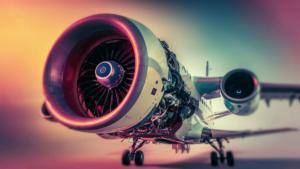When preparing for air travel, understanding the regulations regarding personal items is crucial. Airlines typically allow passengers to bring a personal item along with their carry-on luggage. This personal item is additional to the carry-on bag and often includes items such as a purse, laptop bag, or small backpack. However, there are restrictions on the size and dimensions of these personal items that passengers must adhere to.
Understanding Airline Policies
Airlines have specific guidelines outlining the size limitations for personal items. These guidelines are designed to ensure that personal items can be safely stowed under the seat in front of the passenger, maximizing space and comfort for everyone onboard. While the exact dimensions may vary slightly between airlines, there are general standards that most carriers follow.
Typical Size Restrictions
Personal items are typically required to fit within certain dimensions to be considered acceptable for carry-on travel. While exact measurements may differ, common dimensions for personal items often fall within the range of 18 x 14 x 8 inches (45 x 35 x 20 cm). It’s important to note that these dimensions include any handles, wheels, or other protrusions.
Choosing the Right Personal Item
When selecting a personal item for air travel, passengers should consider its size and functionality. Opting for a compact bag that meets airline requirements while still providing ample space for essentials is essential. Additionally, choosing a personal item with organizational features such as pockets and compartments can help maximize space and keep belongings easily accessible during the flight.
Types of Acceptable Personal Items
While the specific items allowed as personal items may vary slightly between airlines, common examples include:
- Purses or small handbags
- Laptop bags or briefcases
- Small backpacks or shoulder bags
- Camera bags
- Tote bags
Ensuring Compliance
Before heading to the airport, passengers should carefully review their airline’s policies regarding personal items. This includes checking the size restrictions and ensuring that the chosen personal item meets these requirements. Failure to comply with airline regulations could result in additional fees or the need to check the item as baggage, potentially causing delays and inconvenience.
Packing Efficiently
To make the most of the space available for personal items, passengers should pack strategically. Utilizing compression bags or packing cubes can help maximize space while keeping belongings organized. Additionally, avoiding bulky items or unnecessary extras can help ensure that the personal item fits comfortably under the seat.
Understanding the size limitations for personal items on a plane is essential for smooth and hassle-free travel. By adhering to airline policies and choosing a suitable personal item, passengers can ensure that their essentials are readily accessible during the flight. Remember to review the specific guidelines provided by your airline before heading to the airport to avoid any last-minute surprises.
Frequently Asked Questions
Here are some commonly asked questions regarding personal items on planes:
| Question | Answer |
|---|---|
| What are the typical dimensions for a personal item? | Personal items usually need to fit within dimensions around 18 x 14 x 8 inches (45 x 35 x 20 cm), including any protrusions like handles or wheels. |
| Can I bring a backpack as my personal item? | Yes, small backpacks are commonly accepted as personal items by most airlines. |
| Are there any items not allowed as personal items? | Items like large suitcases, oversized bags, or items that pose a safety risk are generally not accepted as personal items. |
| What should I do if my personal item exceeds the size limit? | If your personal item exceeds the size limit, you may need to check it as baggage or pay additional fees, depending on the airline’s policy. |
Additional Tips for Air Travel
Aside from understanding personal item regulations, here are some extra tips for a smoother air travel experience:
- Arrive at the airport early to allow enough time for check-in and security procedures.
- Ensure all liquids in your carry-on luggage comply with TSA regulations to avoid confiscation.
- Keep essential items like travel documents, medications, and valuables in your personal item for easy access.
- Consider joining a trusted traveler program like TSA PreCheck or Global Entry for expedited security screening.
See also:






